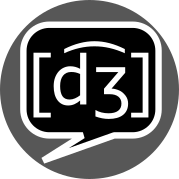Image A shows Bosnian Cyrillic as used in stone inscriptions.
The columns go: Latin (BCMS) alphabet - Greek - Cyrillic “church letters” - Cyrillic “civil letters” (Peter the Great’s reform) - Bosnian letters: 14th, early 15th and late 15th century, typical forms
For context, the BCMS alphabet mostly corresponds to the same IPA symbol, with only these exceptions: Gj /d͡ʐ/, Ž /ʒ/, Lj /ʎ/, Nj /ɲ/, Ć /t͡ʂ/, Č /t͡ʃ/, Dž /d͡ʒ/, Š /ʃ/.

Image B shows various examples of handwritten cursive Bosnian Cyrillic.
This variant of Cyrillic was used in modern-day Bosnia and parts of Croatia (Dalmatia and Dubrovnik), mainly from 14th to 17th century. It used the letter “djerv” <Ꙉ> for /t͡ʂ/, which eventually became a part of the modern Serbian Cyrillic alphabet as <ћ>.
Images from Frane Vuletić’s Gramatika bosanskoga jezika (1890).

